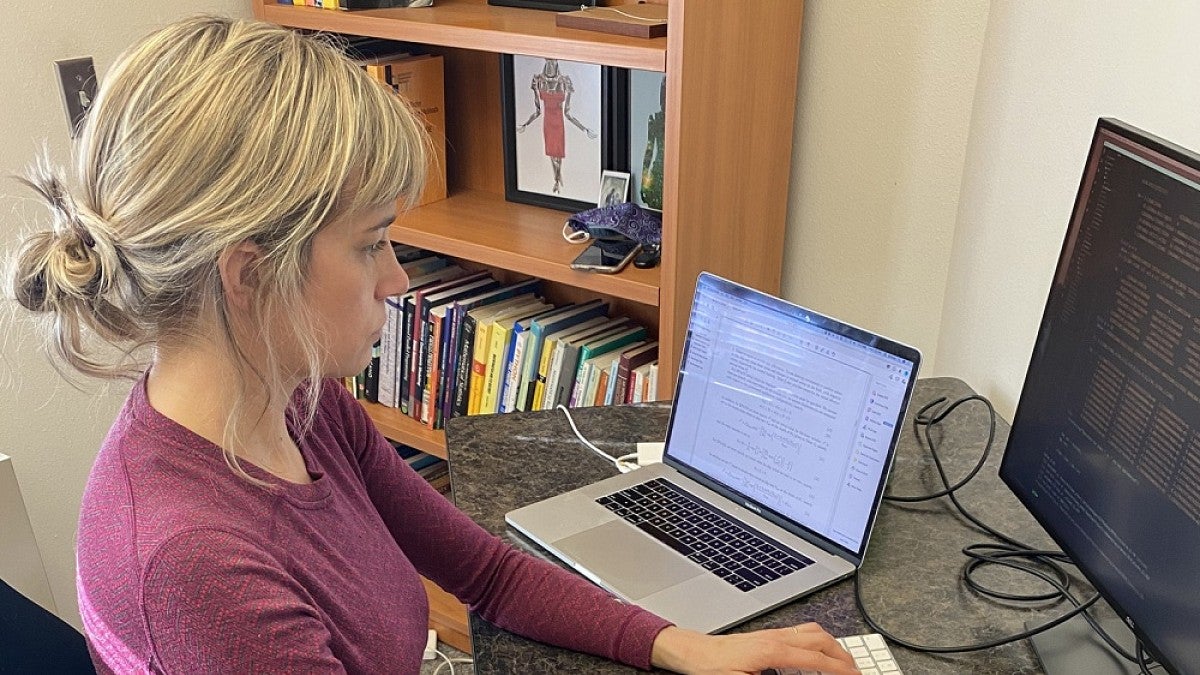The National Science Foundation has awarded UO computer scientist Brittany Erickson two competitive grants, both of which involve building high-performance code for seismic modeling that will be available to the greater scientific community.
Both grants will help develop a method of modeling earthquake and volcano physics, along with their associated hazards. That could mean better forecasting of earthquakes and volcanic eruptions around the world.
The first grant of $287,000 is for two years and focuses on volcanic modeling. Erickson, who holds a joint faculty position as an assistant professor in the both the computer and information science and the earth sciences departments, wrote the grant with her husband, Leif Karlstrom, a UO volcanologist. Erickson is the co-investigator on this grant.
“We’ve always wanted to collaborate, but Leif’s always been in the volcano realm and I’ve always been in the earthquake realm,” Erickson said. “So, finally we’re been able to do something together.”
The focus will be on the Kilauea volcano in Hawaii, she said. The outstanding question in volcano science is how to predict or better understand volcanic eruptions, which happen due to unstable fluids moving around a volcanic conduit. The goal is to develop a computational technique that gives researchers reliable insight into what influences volcanic eruptions.
The second grant of $489,000 is for three years and comes from a collaboration with Jeremy Kozdon, an applied mathematician from the Naval Postgraduate School. Erickson is the primary investigator for the grant.
Their aim is to model the earthquake cycle and show hundreds of years of earthquake activity, which means dealing with large systems of equations. Erickson said the work is groundbreaking and possibly the first of its kind.
“We are trying to answer why some earthquakes nucleate on faults that are unfavorably orientated to the remote stress field,” Erickson said. “Faults in the earth’s crust are usually part of a larger network that intersect in geometrically complex ways. You would assume that those faults more optimally oriented would exhibit an earthquake first, but that’s not always the case. We want to explore this phenomenon through numerical simulation.”
Erickson is also the co-leader of the Southern California Earthquake Center’s working group for advancing codes for simulating earthquake sequences, a group of earthquake modeling researchers from around the world. She said her interests in earthquakes arose from her childhood in California.
“When I was 8 years old, I experienced the 1989 Loma Prieta earthquake that hit San Francisco, and it really affected me,” she said. “My adviser in graduate school was a mathematician working on problems in geoscience, and I jumped at the chance to do some mathematical modeling for earthquake processes. I wanted to do something with math that had clear, broader impact.”
Through their research, Erickson said the models she and her collaborators will build will allow them a better understanding of volcano and earthquake physics. The NSF grants will help develop an open-source, high-performance code that will be available to both the scientific community and the public.
Typically, Erickson’s field of study is dominated by male scientists, she said. She considers herself lucky because she has felt supported by her male colleagues and advisers throughout her career.
At the UO, she noted that the Department of Computer and Information Science has four other women faculty members. Still, gender inequality in her field is a challenging problem to address.
“Women in the workforce are struggling through the COVID pandemic, particularly if they have children,” she said. “I was only able to submit these two grant proposals last summer because our day care opened for a couple months. This wouldn’t have been possible if the day care had remained closed due to the ongoing pandemic. I feel for the other faculty around the university who are at home and responsible their children’s distanced learning. It’s very tough.”
To learn more about Erickson’s work, visit her website.
—By Victoria Sanchez, University Communications


